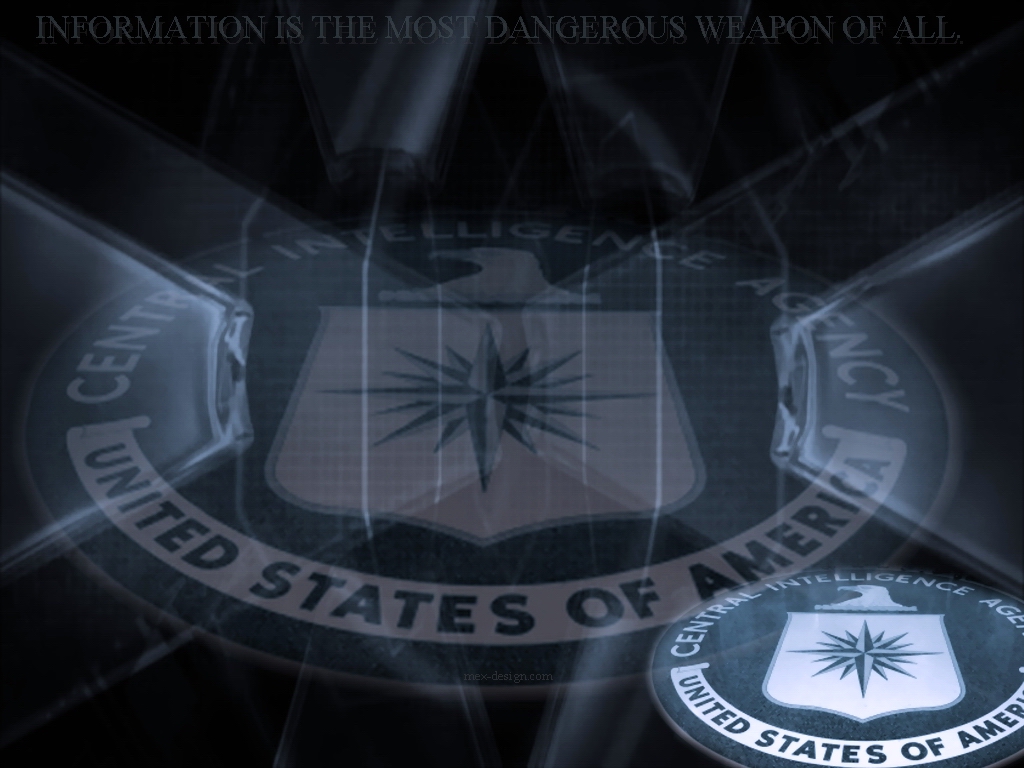Exposing the Black Budget
Why are major CIA, NSA, and Department of Defense programs still being kept secret from Congress and US taxpayers?


By Phil Patton
It’s the world’s wildest high-tech toy catalog, the Pentagon’s annual Dear Santa letter. It includes secret weapons programs with baffiing code names such as Elegant Lady, Tractor Rose, Forest Green, Senior Citizen, Island Sun and Black Light, White Cloud and Classic Wizard. These are the “black budget” programs that pay for spy satellites, invent stealth cruise missiles, tinker with Ladar – laser radar – and experiment on aircraft that change color and helicopters that evade tracking systems. Covering expenditures for intelligence and weapons research, the Pentagon’s black budget is the most titillating portion of the massive classification program that has swelled almost unabated since World War II.
The black budget is the government’s illusory and tangled accounting of what it spends on intelligence gathering, covert operations, and – less noticeably – secret military research and weapons programs. It admits to no easy calculation, but by estimates of those who watch it, the black budget may hit US$30 billion a year – a figure larger than current federal expenditures for education. It includes spending by the CIA, the Defense Intelligence Agency, the National Security Agency, and military R&D.
Documented – vaguely – in funding requests and authorizations voted on by select committees of the US Congress, the black budget is published with omitted dollar amounts and blacked-out passages. It hides all sorts of strange projects, not just from enemies, foreign and domestic, but from the public and elected officials as well. Last year, for instance, it was revealed that the National Reconnaissance Office had for several years used the black budget to hide from Congress the cost and ownership of a $300 million office building, even though the structure was plainly visible from Route 28 west of Washington, DC.
With “program element” numbers, obscured figures, and code names that read like dadaist poetry, the details of the black budget are revealed to only a few select Congressional committee members – and sometimes not even to them. There are several different types of black budgets buried, for example, within the Pentagon’s procurement budget and Research, Development, Test, and Evaluation budget – the tab for the toy testers. Others cover defense intelligence and research. An internal Pentagon memo from August 1994, which was accidentally leaked and showed up in Defense Week, revealed some hard numbers: the National Security Agency spends $3.5 billion a year; the Defense Intelligence Agency $621 million; and the Central Imagery Office $122 million for spy-satellite work.
A code name not mentioned in black budgets but well known to those who watch them is Trader. It is familiar to readers of such Net mailing lists as the skunk-works digest (majordomo@mail.orst.edu, subscribe: skunk-works in message body) or the newsgroup alt.conspiracy.area51. The code name Trader belongs to Paul McGinnis, who assembles and correlates public information to create a detailed estimate of items in the real budget. Several years ago, McGinnis became fascinated with all the code names and turned himself into a one-man truth squad: collector, interpreter, collator, and online publicizer of the black budget and its associated “special access programs.”
McGinnis is one of a growing number of private citizens who have made a second career of tracking the military budget. His research complements traditional Washington watchers of government – the public-interest muckrakers, if you will.
One of the most respected is Steve Aftergood, who writes the Secrecy and Government Bulletin for the Federation of American Scientists, a public-interest group founded in the wake of the first A-bomb. Exposing weapons boondoggles and cost overruns, Secrecy and Government has helped formulate a fundamental critique of classification policy. What Ralph Nader was to Detroit, the federation has been to the Pentagon. (Aftergood’s Bulletin appears on IntelWeb, a site for spy buffs at http://awpi.com/IntelWeb/.) Another famed watcher is Steve Douglass, the Amarillo, Texas, publisher of Intercepts, a newsletter for military-monitoring buffs (see “StealthWatchers,” Wired 2.02, page 78). Douglass reads Lockheed in-house publications and local newspapers near Air Force bases for, say, reports of public-school expansion, which indicates the arrival of a new military unit.
Some of these investigators are merely curious. Some are ideologically opposed to black budgeting, arguing that it is wasteful and futile, that revealing the cost of a stealth fighter tells no more about how to build one than the cost of a Cadillac does. Black budgeting, its opponents argue, is more about hiding from Congress and the public than from any foreign enemies. Many black programs, such as the B-2 stealth bomber and the Milstar satellite system, ended up costing far more than anticipated. Others failed to work as advertised. The Bush administration, for example, killed the Navy’s A-12 stealth carrier aircraft before it was unveiled to the public. Aren’t there better things we could be doing with our money?
For many who track it, the black budget is more symbol than substance. In it, they hope to unearth a Rosetta stone that might decypher the mountain of secret information the Pentagon and intelligence agencies have amassed in recent decades. McGinnis, like many others, discovered the black budget through his passion for airplanes – spy planes and stealth fighters in particular. Like film or rock stars, these planes have their own fan clubs and groupies who post in AOL’s aviation section or subscribe to the skunk-works mailing list, which provides information and lore about Lockheed Advanced Development Co.’s famous Skunk Works research center. Skunk Works created the SR-71 Blackbird spy plane, the F-117 Stealth fighter, and numerous weapons it won’t admit to making. The company generally ranks as a triumph of the black budget world. It, of course, has had its share of failures – which black budgeting hides.
Fascinated by programs such as Aurora, a putative hypersonic spy plane that has been rumored for so long it is now almost legendary, McGinnis distinguished himself from other black budget watchers by filing Freedom of Information Act requests about programs whose names suggested they might be aircraft. The name Aurora, for example, first showed up in the 1986 Pentagon budget request as a mysterious line-item code name. The size of the appropriation for Aurora rose from $8 million in 1986 to $2.3 billion for 1987. The next year it vanished. Watchers soon suspected it was a successor to the SR-71 Blackbird spy plane.
McGinnis lives in Huntington Beach, California, and works long hours as a test engineer specializing in satellite data communications for a company whose name he would rather not drag into his private obsession. When he’s not working, he goes through thousands of pages of government documents, most of them provided free by the issuing agencies, others picked up at the local library. In years of work, he has learned to read between the lines, discovering that the “Virginia Procurement Office” is really the CIA and that the “Maryland Procurement Office” is the National Security Agency. He can cite chapter and verse of such Pentagon reports as “Critical Technologies for the ’90s.” And he casts a trained eye on curious proposals in the Commerce Business Daily, the standard reference for federal contracts. He even consults with archaeologists for the Department of Energy – they were called in when a road for a mysterious black budget project at the Nevada nuclear test site 70 miles northwest of Las Vegas impacted a Native American settlement.
Any delight or pride McGinnis takes in the chase is masked by a clipped and effi-cient tone of voice. Yes, he says, his work is “about causing some kind of change,” but he is no fervid ideologue. He works behind the scenes, feeding information to politicians pushing for reform in classification policies. He speaks of “people inside government who are on our side,” implying that most are not, but his comments hardly demonize the Pentagon or the intelligence agencies.
When he does take some time off from his jobs, he’s likely to be found hiking in the desert, enjoying the fiowers and the birds, though he’ll end up near a place like TRW’s classified radar site in the hills east of San Clemente, its three white radomes glowing in the sunlight behind the chain-link fence.
“I became interested in the subject of excessive military secrecy,” McGinnis e-mailed me recently, “because it struck me as wrong that the US military was still acting as if the Cold War was happening. A turning point came with a September 1993 Freedom of Information Act case I filed on the classified aircraft codenamed Senior Citizen (Program Element 0401316F) and Groom Lake.”
McGinnis found himself exchanging letters with an Air Force colonel named Richard Weaver (then Deputy for Security and Investigative Programs for the Secretary of the Air Force). Reading the censored case files he received from his request, McGinnis became convinced that the Air Force (and other military services) had large numbers of senior officials who held arrogant attitudes toward the average American taxpayer.
“You can imagine the anger I felt when I saw censored internal Air Force memos from Colonel Weaver with lines like ‘His appeal justification is the standard (blacked-out censored area) provided by almost everyone else who makes similar requests for this information. All have been turned down.’ And ‘Mr. McGinnis’s rationale that he somehow should be allowed to perform those oversight functions of Congress, while novel, is not compelling.'”
This kind of response turned a mild-mannered inquirer into a much more fervent muckraker. “I was merely pointing out the Air Force’s violations of US classification policy, contained in Executive Order 12356, and how secret spending violated Article I, Section 9, Clause 7 of the US Constitution,” McGinnis argues with typical mastery of the obscure. He’s referring to the requirement that Congress approve all federal spending. The black budget, McGinnis argues, violates that provision by hiding the purpose of expenditures.
McGinnis is not alone in his dogged pursuit of military secrets. He took inspiration from Blank Check: The Pentagon’s Black Budget, a 1990 book by reporter Tim Weiner. Now at The New York Times, Weiner covered the CIA’s Aldrich Ames scandal and won a Pulitzer Prize in 1988 for his exposé of black budget programs for The Philadelphia Inquirer.
In Blank Check, Weiner argued that the black budget represented an entire culture of deception – “the realm of nukes and spooks,” he called it.
Take a program such as element number 207248F. The program behind the number was called STUDS, for “special tactical unit detachments.” It is hard to believe that any overtones of this acronym are other than intentional.
In one year this program went from $885,000 to $20 million. Budget readers know from the program number that STUDS is operational – not just a research project but a working unit, that it is tactical (rather than strategic), and that it is Air Force. More specifically, it is people fiying captured or purchased foreign planes in the desert north of Las Vegas. The testing program is no secret – an Air Force general died several years ago fiying a Russian fighter. But many of the aircraft have probably come into the country surreptitiously since the collapse of the Soviet Union and may include prototypes purchased from renegade generals or engineers. For fiscal 1995, the program number persists, sans its infiammatory acronym, but its budget has risen – to $118 million, according to McGinnis.
Looking at other program numbers in a similar fashion, McGinnis took the work of Weiner and other reporters much further. He began assembling his own rendition of the black budget using Congressional and Department of Defense documents and made it available by ftp and on mailing lists through commercial online services. The Internet, thanks to McGinnis and others, has emerged as a new tool for black budget watchers trying to change policy in the secret world. McGinnis is amused by the irony that the Internet, based on the original Arpanet created with Pentagon R&D money, provides a medium for revealing the secrets of the Department of Defense.
McGinnis spends much of his time analyzing such government documents as the House and Senate versions of the “National Defense Authorization Acts,” scrutinizing both the reports and the supporting testimony to Congress. He consults the Pentagon’s own guide to reading the budget, Department of Defense Handbook DoD 7045.7-H. He spends hours poring over publications with names like “FYDP Program Structure,” “Supporting Data for Fiscal Year 1994 – Budget Estimate Submission – Descriptive Summaries – Research, Development, Test and Evaluation,” and “Critical Technologies Plan for the Committees on Armed Services – United States Congress.”
These are not exactly light reading: the plots are slow and hard to decipher. From his own reading of these texts, McGinnis believes there are misleading or meaningless nomenclatures, blank cost figures, and even phony line items in any code names that include the characters r 1 and p 1. And sometimes, he says, black projects are twinned, like binary stars, with “white,” or open, projects. The Orient Express superplane program, announced publicly with great fanfare by Ronald Reagan in 1986, is widely thought to have been at least partially a cover for black research into a hypersonic reconnaissance craft or a pulse-jet engine.
McGinnis has posted his sketch of the black budget, a dinosaur skeleton with conjectural plaster bones filling in the gaps, on his ftp site (ftp.shell.portal.com in the/pub/trader directory). He began an electronic newsletter, Neon Azimuth – a designation mocking the code names the Pentagon gives to its secret programs – and now has a Web page (http://www.portal.com/~trader/home.html). The site includes a novel directory of sources of satellite imagery, from the USGS EROS Data Center to Russian satellite pictures.
McGinnis also posts the results of his various Freedom of Information Act inquiries and makes available back issues of The Groom Lake Desert Rat newsletter, published online by Glenn Campbell, the self-appointed watchdog of the secret Groom Lake Air Force base in Nevada.
McGinnis often quotes from Candide and claims Voltaire as a hero. But for all his Voltairean skepticism toward power and government, McGinnis and other black budget watchers may also share Candide’s naïveté, which sometimes verges on self-righteousness.
After all, can one reasonably expect the Pentagon to be wholly open about how much it spends on death rays or manta-shaped drones? Can anyone who’s spent time watching C-Span fail to share the Pentagon’s fear of leaks from the fairly piebald cast of Congressional characters known as our duly elected representatives?
But the forces that favor classification reform are growing, even as the strength and prestige of the intelligence community declines. Now that we know the CIA grossly overestimated the economic resolve of the former Soviet Union and, even worse, overestimated the allegiance of the agency’s own employees such as Aldrich Ames, now that a succession of less and less satisfactory actors have played James Bond, even an ordinary citizen may be inspired to believe he can do a better job of spying than the professionals.
The political legitimacy – or lack thereof – of the black budget remains an important issue to many who watch it. McGinnis has political convictions, to be sure: he supplies reform-minded politicians with inside information. But the black budget is the tip of an iceberg of secret government records dating back to before World War II and increasingly exposed as the Cold War thaws. The list of odd numbers and funny words that constitute the budget stands for something more: a mountain of information that belongs to the American taxpayer. Gradually, that information is beginning to leak out.
Now that many KGB files are open, the mass of US classified information looms as a huge target for open-records activists, as well as for the curious. There is a sense that strange wonders await discovery, bizarre, yet-undocumented programs from mind-control experiments to the half-revealed effort in the ’70s to develop the “autonomous land vehicle,” a giant walking tank reminiscent of the lumbering war machines in The Empire Strikes Back. There are hints of a program called Iris, still underway, to create an aircraft that changes color, and of Black Horse, a next-generation jet. There is Brilliant Pebbles, smart munitions in which hundreds of tiny dart-like missiles are fired at incoming ICBMs as part of Star Wars, which, McGinnis argues, “never really went away.”
In Skunk Works: A Personal Memoir of My Years at Lockheed, published last year by Little, Brown, the late Ben Rich, former head of Lockheed’s advanced development division, complained of the burden of doing black business: finding engineers who could pass security checks (and waiting six months for these to be completed), as well as suffocating and compartmentalized design processes, uninformed Washington inspectors, and many other constraints. He estimated that working in the black added about 25 percent to the cost of a weapons system (many estimates are higher). He cited the absurd case of a urinal-tube heater he designed in the late ’50s for spy-plane pilots confronting the rigors of peeing at high altitude. The device was immediately classified, presumably so Russian pilots could not use American know-how to avoid frostbitten members.
Rich advocated a two-year “sundown” rule that would automatically abolish secret classification unless other action was taken. But for half a century now, classification has continued, propelled by its own momentum.
Classification can be viewed as the information equivalent of the national debt. Information we put off releasing is like debt we put off paying. Like the fiscal deficit, it costs a lot to service and maintain. Keeping things secret requires guards, vaults, background checks. A General Accounting Office study placed the cost at $2.2 billion, but the office pointedly noted that its calculations had been hampered by the refusal of the CIA to cooperate. Private industry spends an estimated $13 billion more adhering to government security standards.
There is evidence that the secrecy structure may collapse of its own weight before anything is done to fix it. Says Steve Aftergood, “The more secrecy you have, the thinner your security resources are spread, and there is a loss of respect for the system. That promotes leaks. It’s hard to keep things secret. It’s work. People have to sit and read boring hearing records and black things out. It’s easy to imagine they would miss stuff.”
Aftergood believes that accidental disclosure has been growing. Part of the reason is incompetence, part is semi-official policy. He wrote in the Bulletin that “‘accidental’ disclosure has the great advantage that it does not require anyone to exercise leadership or to take responsibility. It has now become the preferred policy particularly since classification reform is not working. If current trends are taken to the limit, everything may eventually be classified – but nothing will be secret.”
Aftergood concludes the leaks are a sign of institutional decadence. “The government has found it easier to let the classification system disintegrate than to establish new standards that command respect and loyalty,” he writes.
There are signs of reform. The Clinton administration has split the Advanced Research Projects Agency, which developed vital weapons (and the Internet) in the past, from the Pentagon and charged that its research should now focus on dual-use technologies with both civilian and military applications.
And after years of heaving and groaning, a new policy seems to be arriving. Late last spring, President Clinton issued a long-awaited executive order on secrecy reform. Effective this last month, the order will declassify hundreds of millions of pages of Cold War documents. Under the new policy, most current secret documents will be automatically declassified after 25 years, and classification from now on will automatically expire after a decade – approximately the same length of time that has passed since government officials began drafting the new order.
There are loopholes, however, that will keep many sensitive documents under lock and key, including those relating to the president and to foreign government involvement. And it will be the unenviable task of something called the Information Security Oversight Office to handle the laborious duty of declassification.
With this order and with John Deutch, the newly installed head of the CIA, promising both a fresh look at classification policy and a new spirit of openness, it might seem that the work of McGinnis and other black budget watchdogs has come to an end. But it is far from clear that the new openness is real. A Congressional committee on secrecy policy, which brings together such unlikely allies as New York Democratic Senator Pat Moynihan and North Carolina Republican Jesse Helms (both share a concern over excess security), has yet to produce specific recommendations for bringing the black budget out of the shadows. And the panic reaction that followed the arrest of Aldrich Ames has created a thick and swirling atmosphere of fear that dims the prospects of secrecy reform.
But the current administration has already declassified a huge number of documents – from World War II, the ’50s, and the ’60s. Many of these represent what the black budgets of the past really meant. They are the meat on the bones of old numbers. And, emerging like flickering images from some time machine’s screen, they seem almost surreal: they represent in effect the government’s first admission of things that every history book already records. The mass of newly declassified paper will supply McGinnis and others with all sorts of nuggets of information. And their role will increase in importance: it has been left to private citizens, not government professionals, to poke through the rubble and make sense of it all.
One thing they have found is details of how, in the early ’60s, the Defense Advanced Research Projects Agency funded a program under the name Corona to find out if there was indeed a “missile gap” with the Soviet Union. Orbiting spy satellites snapped high-resolution photos (video was not good enough) and then ejected the exposed film in reentry pods aimed at convenient oceans. There, the plan went, C-130 cargo planes trailing great drag lines would snare the capsules and return them for processing and analysis. It took many tries before the somewhat improbable system worked.
In the official budget, Corona was advertised as a civilian space effort under the name Discoverer. In fact, the pictures from the secret project proved that the threat of Russian bombers and missiles was far less than had been feared. Recently, some 800,000 images from 1960 to 1972 were made available, with sample images online at http://edcwww.cr.usgs.gov/dclass/dclass.html. Looking at them today is to see laid out, with Kodak clarity, just how misguided the defense buildups of the ’50s and ’60s were.
These images mark the arrival of the news from past decades, like light from distant galaxies. To see spy-satellite photos from the once supersecret Corona program, snapshots of the Cuban missile crisis, and close-ups of Russian airfields and ICBM pads makes clear how widely divergent are the time tracks of the black world and the real world. In a sense, the black budget is the last legacy of the old Soviet threat: a mirror in which a now vanished Medusa of nuclear holocaust becomes, we hope, forever fossilized.
Phil Patton (pattonp@pipeline.com) is a contributing editor to Esquire.
Copyright © 1993-2004 The Condé Nast Publications Inc. All rights reserved.
Copyright © 1994-2003 Wired Digital, Inc. All rights reserved.
3.11: Exposing the Black Budget.





















